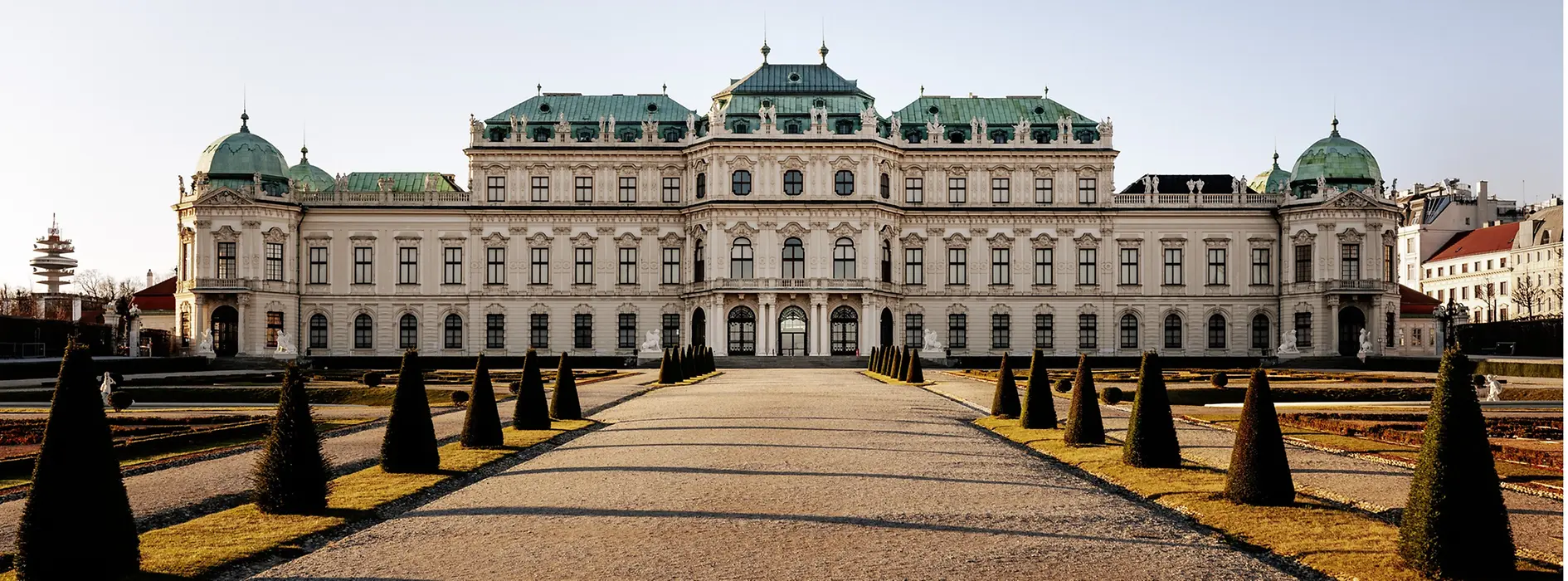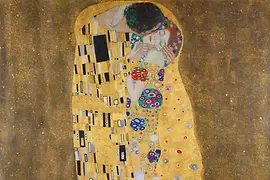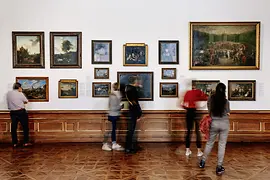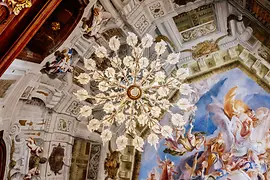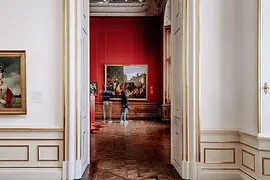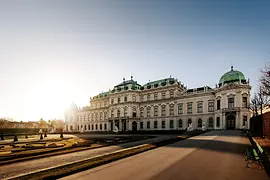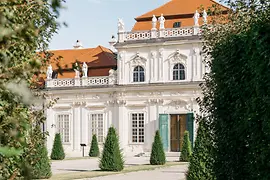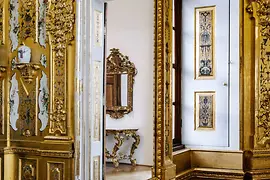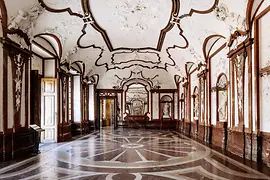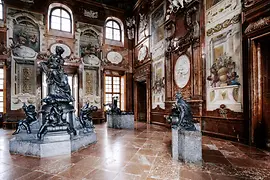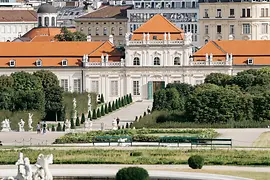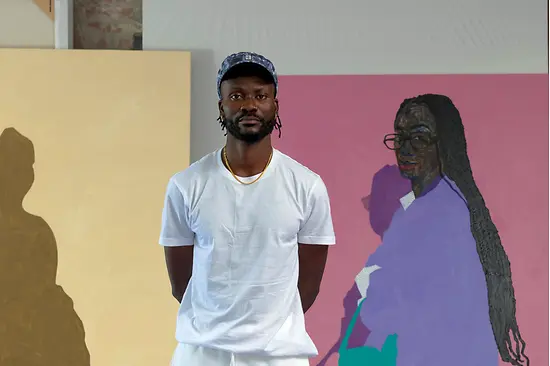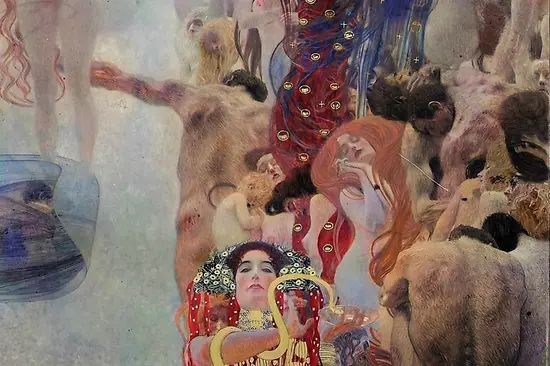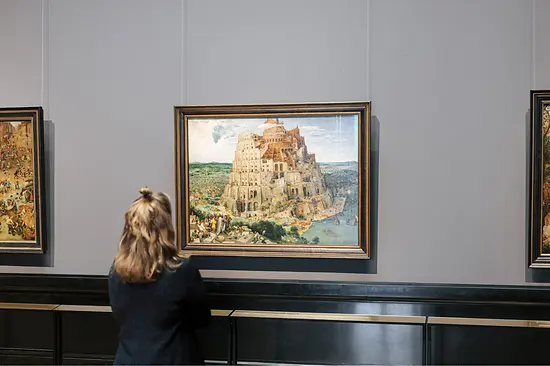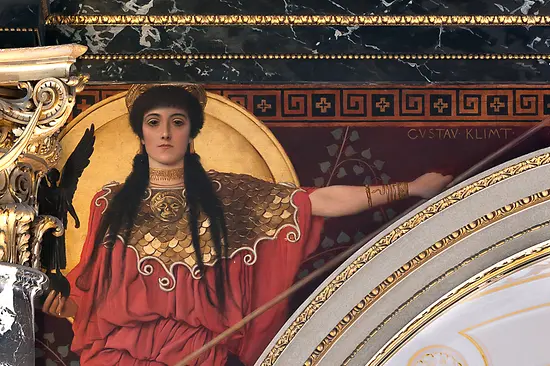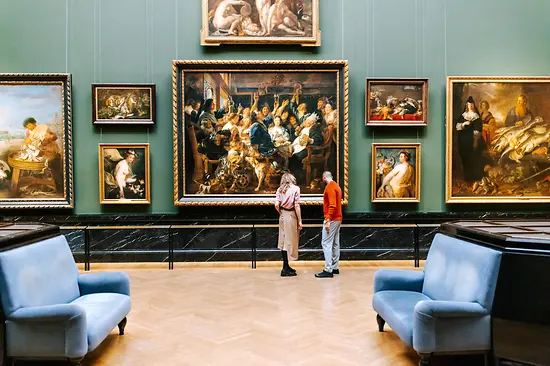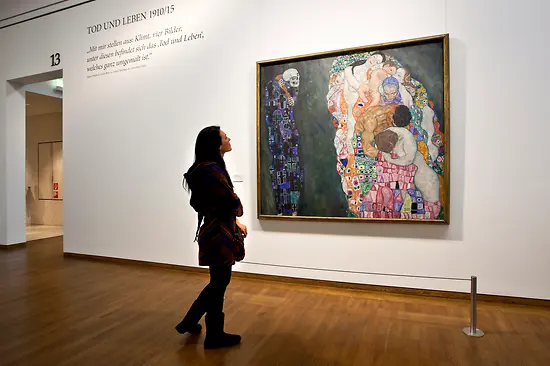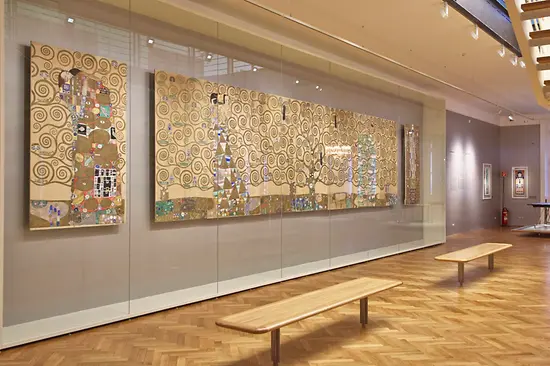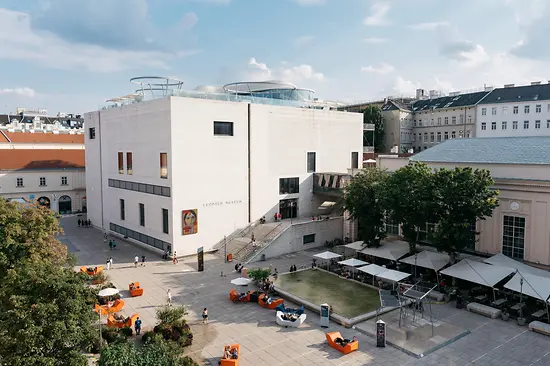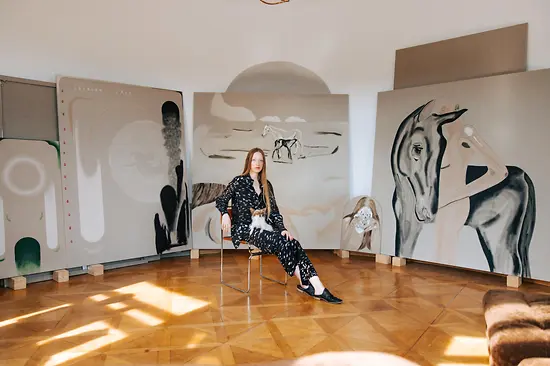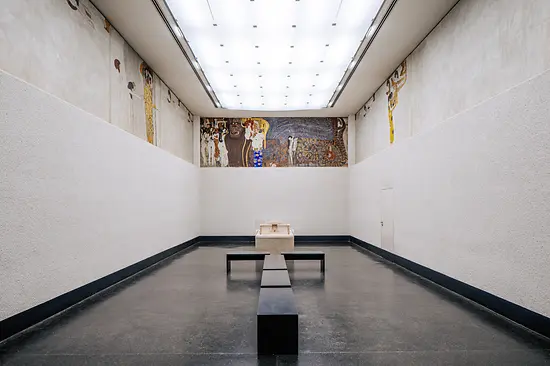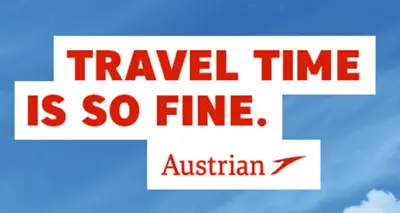Belvedere – Palace and Museum
Prince Eugene of Savoy (1663-1736), successful general and art connoisseur, had Belvedere garden palace built by Johann Lukas von Hildebrandt as his summer residence – at the time it was still outside the gates of the city.
This baroque architectural jewel consists of two palaces (Upper and Lower Belvedere), which today house Austrian art from the Middle Ages to the present day.
Upper Belvedere - World's biggest Klimt collection and "The Kiss"
The heart of the Belvedere collection is formed by the 24 paintings of Gustav Klimt with his golden images "The Kiss" and "Judith". Klimt's "The Kiss" in particular is world-famous. The 180 x 180 cm painting was created in 1908/09 and shows Klimt and his muse Emilie Flöge as a couple in love. "The Kiss" is probably Austria's most famous work of art. Klimt's portraits of women also impress and be marveled at in the Upper Belvedere.
The permanent exhibition was completely redesigned at the beginning of 2023: "Picture this! The Belvedere Collection from Cranach to EXPORT" extends throughout the entire palace in the wonderful Baroque ambience, and shows the highlights of the collection together with new additions and works from the holdings. On show is Austrian art in the context of the creative work of international artists of their time. It includes Austrian highlights from the Middle Ages and Baroque, while the icons of Vienna Modernism meet greats like Claude Monet, Vincent van Gogh, and Auguste Rodin. Around 400 works recount 800 years of art history. The show collection also looks in depth at the interactions between art and society.
Lower Belvedere and Baroque garden
While the Upper Belvedere was all about representation, the Lower Belvedere acted as the residential palace of Prince Eugene. The lavish splendor of the owner is reflected in the Groteskensaal (Hall of the Grotesque), the Marble Gallery and the Golden Room. Special exhibitions are held in the Lower Belvedere and the Orangery. Nowadays, medieval art can be marveled at in the sables where the prince's horses once stood.
The gardens of the Belvedere are a highlight of Baroque landscape architecture. A reflecting pool was created in front of the place, in which the building's façade is reflected. The large terraces with ponds connect the Upper to the Lower Belvedere. The Kammergarten was originally reserved only for the man of the house and his closest associates. The Alpine Garden in the palace park is the oldest in Europe.
For families
You can also choose to chase after the so called "Fantastic Palastics" with your smartphone in your hand. There are two versions of this fun game: the “Garden Game” and the “Mission Museum”: As part of this exciting augmented reality game, you have to find the animals in the park that were already living here during Prince Eugene's lifetime. At the Upper Belvedere, an unsolved mystery about artists of the future is waiting to be solved. For everyone aged eight and over.
Please note: If visiting the Upper Belvedere, you must make a free reservation for a time slot for group travelers (from 10 people).
Monday to Sunday, 9.00 am - 6.00 pm
Email: booking@belvedere.at
Telephone: +43 1 795 57-333
- Prinz-Eugen-Straße 27, 1030 Wien
- info@belvedere.at
- https://www.belvedere.at
Comments
Please note: If visiting the Upper Belvedere, you must make a free reservation for a time slot for group travelers (from 10 people). https://www.belvedere.at/en/tourism-b2b
Monday to Sunday, 9.00 am - 6.00 pm
Email: booking@belvedere.at
Telephone: +43 1 795 57-333
Vienna City Card
- 1,50€ on the current entry ticket price (Upper Belvedere)
- 2,50€ on the current entry ticket price / 2in1 ticket (Upper and Lower Belvedere)
Buy now with discount:
Opening times
- daily, 09:00 - 18:00
Accessibility
no steps (Swinging doors 102 cm wide)
Parking spaces for people with disabilities
Parking space for visitors with disabilities in front of the entrance at Prinz-Eugen-Strasse 27, Parking: 10 am – 6 pm
Seeing eye dogs allowed
Wheelchair accessible restroom available.
Reduced admission for people with disabilities and assistants. "See differently" guided tours (tactile tours) in the Upper Belvedere for blind and visually impaired visitors. Video guides in Austrian Sign Language (OGS) and International Sign are available for deaf visitors.
2 elevators reachable via a ramp (staff will provide assistance), wheelchairs available at the cloakroom.
Shop/café: a few steps (staff will provide assistance).
Additional information about your accessible visit can be found at:
https://www.belvedere.at/en/your-visit/inclusion-museum
Vienna City Card
-€ 1,50 on the current entry ticket price
(Lower Belvedere)
-€ 2,50 on the current entry ticket price / 2in1 Ticket (Upper & Lower Belvedere)
Buy now with discount:
Opening times
- daily, 10:00 - 18:00
Accessibility
(Door 90 cm wide)
Rennweg 6
Ramp 600 cm long , 200 cm high
Seeing eye dogs allowed
Wheelchair accessible restroom available.
Guided tours for groups in Austrian sign language and for the visually impaired (tactile tours). Reduced admission for persons with special needs and their escorts.
Lower Belvedere Shop & Orangerie: no steps
Orangery entrance: wheelchair access via link corridor from Lower Belvedere to the Orangery, 2 single, paned doors (each 131 cm wide). Wheelchair-accessible restroom in the Orangery.
- Rennweg 6, 1030 Wien
- info@belvedere.at
- http://www.belvedere.at
Opening times
- daily, 10:00 - 18:00
Accessibility
no steps (Door 125 cm wide)
Seeing eye dogs allowed
Guided tours for groups in sign-language and for the visually impaired (tactile tours). Reduced admission for persons with special needs and their escorts (3 Euro each).
Wheelchair-accessible restroom in the Orangery
Orangery Shop: wheelchair-accessible
- Landstraßer Gürtel 1, 1030 Wien
- alpengarten@bundesgaerten.at
- http://www.bundesgaerten.at
Vienna City Card
Standard ticket price: 4,50€ /
Savings: 1€
Opening times
Closed during bad weather
- daily, 10:00 - 18:00
Cash desk closes at 17:30
Guided tours
Information and bookings for guided tours
+43 664 150 76 42
Accessibility
no steps (Door 170 cm wide)
Seeing eye dogs allowed
Wheelchair accessible restroom available.
Guided tours from 10 persons, contact: Michael Knaack, Tel: (+43 1) 664 150 76 42
Garden area with gravelled paths, some narrow and with stepping stones
